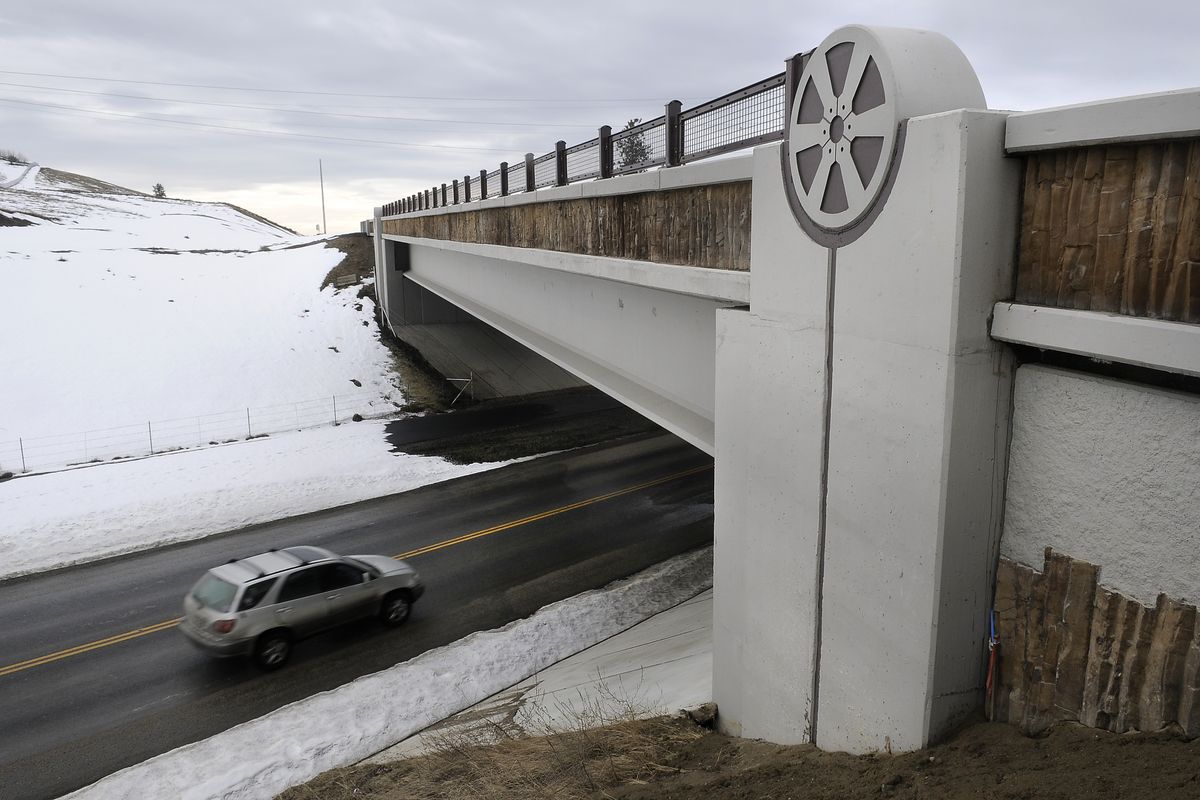Lure of the open road
North-south route promises economic opportunities

A completed north Spokane freeway – sought for more than a half-century – would bring economic growth to the region as much as it would speed traffic across the city, business leaders say.
The $2.1 billion project is already creating hundreds of jobs and could open the door to new business investment along the corridor, possibly on ample industrial land adjacent to the freeway route.
Business leaders also believe the North Spokane Corridor has the potential to stimulate international trade with Canada by making it easier for freight to move to and from the border.
“In terms of freight mobility, this is what you need to be competitive in the economy,” said Rich Hadley, chief executive of Greater Spokane Inc., the city’s business promotion arm.
Saturday’s opening of the first leg of the freeway, between Francis Avenue and Farwell Road, is just a slice of the 10.5-mile link between Interstate 90 and U.S. Highway 395 at Wandermere.
This initial 3.7-mile segment may not have a lot of value to residents since it only connects Hillyard to Mead, but as the freeway is built out, it will start siphoning 18-wheelers from Division and Market streets, easing congestion and making those streets safer.
Already, U.S. 395 through Spokane carries 7.2 million tons of freight annually, an amount that has substantially increased since international free trade opened in the 1990s, according to the state Department of Transportation.
Hadley said Spokane’s position between coastal U.S. ports and the resource-rich Canadian interior makes it a likely spot for expanded manufacturing – in particular to supply an oil sands extraction industry north of Edmonton, Alberta.
In addition, the freeway is expected to improve access to underused industrial land in northeast Spokane, which some leaders say could provide the underpinnings for an economic revival in the Hillyard commercial area.
So far, the state has allocated $532 million to the project to fund 5.7 miles from Francis Avenue to Wandermere. That spending includes property acquisition along the entire route.
DOT estimates it will need another $1.6 billion to finish the freeway from Francis to I-90 and could spend another 20 years on the job. By then, the total cost could swell to $3 billion.
Jobs keep coming
During a flyover of the project last week, it was easy to see dozens of trucks moving along the construction zone, coming and going from a large rock mine and plant opened on a forested hillside just east of Wandermere.
Major pieces of the work have been awarded to local contractors, including Max J. Kuney Co., Acme Concrete Paving Inc., and Graham Construction and Management Inc. Concrete arch components for a railroad tunnel were supplied by Central Pre-Mix Prestress Co.
Graham recently was awarded a $37.5 million bid to complete a four-lane divided section from Farwell Road to Wandermere, a two-mile segment scheduled to open in 2011.
DOT estimates that for every $1 million in freeway spending, 10 jobs are created.
But getting funding for construction south of Francis remains a problem.
Business leaders said they have ramped up a major lobbying effort, including a push for a grant from a second round of federal stimulus money later this year.
Most of the funding so far has come from the state, partly as a result of a gasoline tax increase several years ago.
Cheryl Stewart, assistant executive director for the Inland Northwest Association of General Contractors, said the freeway could be worth as many as 2,000 jobs a year for 15 years if funding continues at an even pace.
Stewart said the 2011 opening of the leg from Wandermere to Farwell will provide traffic relief on the North Side.
The need to ease traffic congestion has long been at the root of the freeway proposal. As the freeway proposal languished, both the city and state pursued intermediate projects to ease North Side congestion, such as widening Division and creating the Division-Ruby couplet south of Euclid Avenue.
Decades-old idea
As early as 1946, a state report called for building a companion roadway adjacent to Division Street.
The idea for a freeway got rolling the mid-1950s when a preliminary study said the project might cost $13 million.
Freeway talk accelerated in the 1960s and ’70s, but proposed routes through the Logan and Lidgerwood neighborhoods ran into opposition, particularly from lawmakers from the North Side’s Third District, who suggested moving the freeway route eastward to the Hillyard area.
Despite opposition, residents in Spokane generally have favored building the freeway. An advisory poll in 1973 gave the freeway a 3-to-2 yes margin.
Spokane folklore says that public opposition killed the plan in the 1970s, but news files don’t necessarily support that version.
A Spokane Chronicle article from Feb. 21, 1975, quoted the highway director at the time as saying that a lack of gas tax revenue played a major role in shelving the project. The state then was in a slump known as the “Boeing Bust.”
Closure of BNSF rail facilities in Hillyard in the 1980s opened the door for the current route just east of Hillyard’s business district.
Residents in the path of the freeway were against it, but momentum from government, business and political leaders would not be stopped.
The best that property owners in the path could do was to sue the state to gain better settlements for condemnations.
Former Shady Slope homeowner Pauline Fissler said she still misses her acre of property taken by the state. “I’ll never get my life back,” Fissler said. “I fought it as much as I could.”
But many residents along the route are optimistic. In Hillyard, business leaders hope for an economic renaissance.
“Hillyard will become a destination for Spokane,” said Dave Griswold, chairman of the Hillyard Neighborhood community development steering committee.